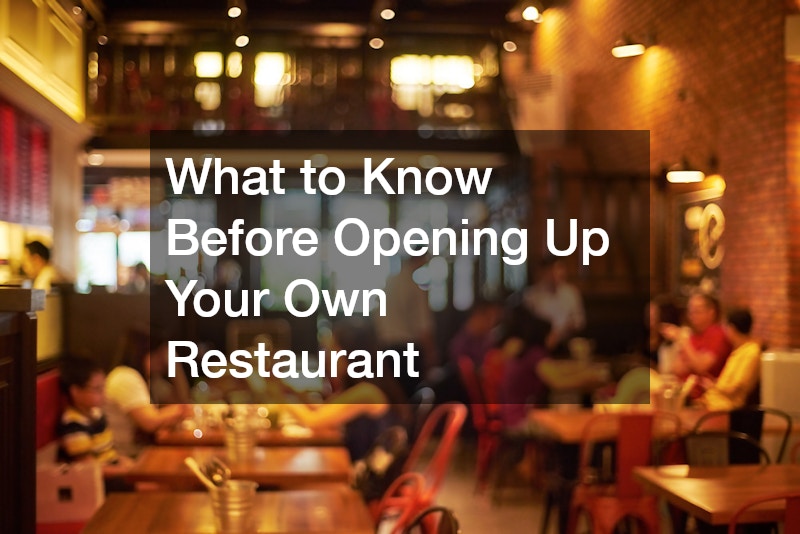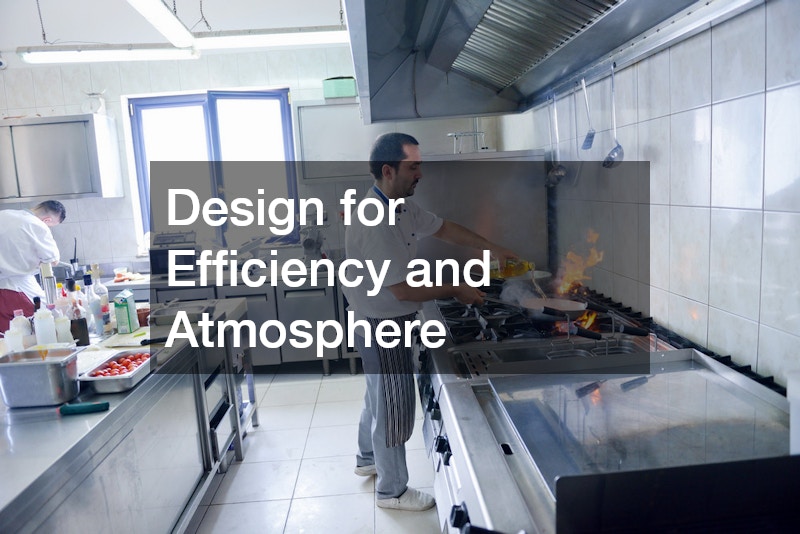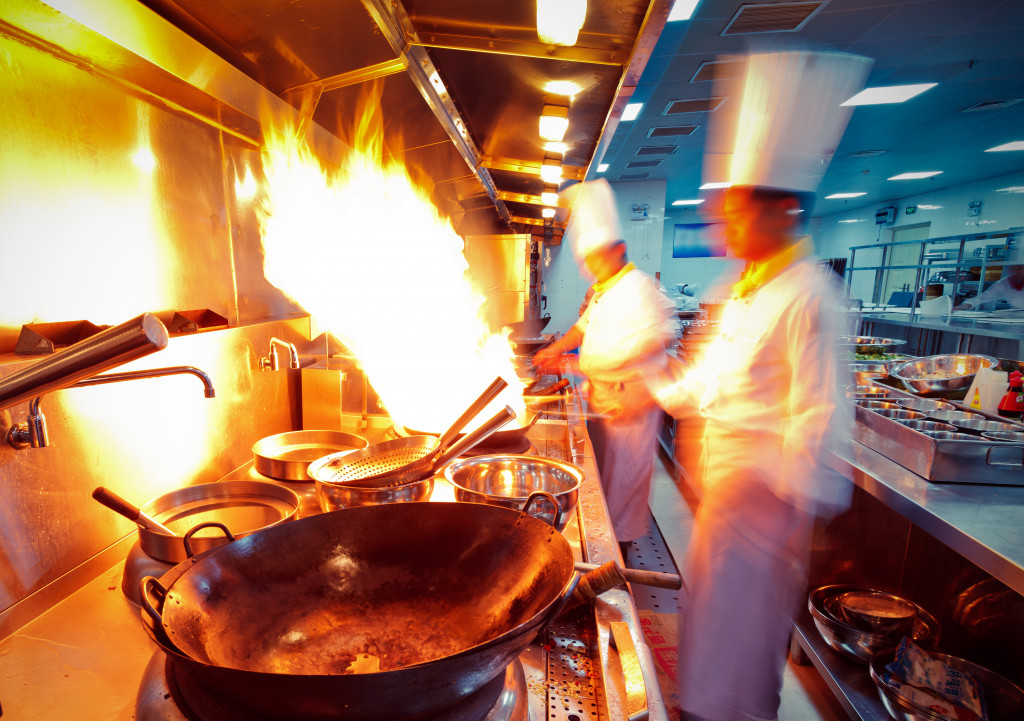Opening up your own restaurant can be one of the most rewarding and challenging business ventures you ever undertake. The idea of running a place where people come together to share meals, celebrate milestones, and enjoy unforgettable dining experiences is appealing to many. However, the reality is that restaurants are complex businesses that demand significant financial investment, careful planning, and relentless attention to detail. The restaurant industry is famously competitive, with many new establishments closing within the first three years due to poor planning, mismanaged finances, or a lack of market demand.
A successful restaurant isn’t built on great food alone—it’s the result of dozens of well-executed elements coming together. From location and menu design to marketing and operations, every piece of the puzzle must fit perfectly. Even small oversights, like failing to plan for enough parking or neglecting online marketing, can make a huge difference in your long-term success. The key to thriving in such a competitive field is preparation, and that means understanding all the moving parts before you open your doors.
The sections that follow cover everything you need to know before opening up your own restaurant. By exploring these factors in detail, you can avoid common pitfalls and position your business for a strong start and sustained growth.
Research Your Market Thoroughly
Before signing a lease or buying equipment, take the time to truly understand the market you’re entering. Market research should go beyond simply knowing which cuisines are popular—it should involve a deep dive into demographics, customer behavior, dining trends, and competitor performance. Identify the types of restaurants that are thriving in your area and figure out why they are successful. Are they known for quick service, unique menu items, exceptional ambiance, or family-friendly environments? This will help you determine what gap your restaurant could fill.
Visit other establishments at different times of day and days of the week to see when they are busiest. Take note of the clientele, the menu pricing, and the way customers interact with staff. If you notice long wait times at certain family restaurants during weekends, this could indicate demand for more family-friendly dining in the area. Conversely, if upscale eateries are always booked on Friday nights, there may be room for another fine-dining option.
Your research should also examine external factors that affect customer convenience, such as location accessibility and parking availability. Many restaurant owners underestimate how crucial this is—customers are far more likely to return to a place that’s easy to get to and has ample parking. Working with parking lot paving services or commercial asphalt paving companies early on can ensure your property’s parking area is smooth, safe, and attractive. This is not just about functionality—it’s about creating a positive first impression the moment a customer arrives.
Develop a Clear and Detailed Business Plan
A well-crafted business plan is the blueprint for your restaurant’s success. This document should clearly define your concept, target market, menu structure, pricing strategy, marketing plan, and operational procedures. It’s also a vital tool for securing financing from banks or investors, who will want to see that you’ve thought through every aspect of the business.
Your business plan should start with a detailed description of your concept and unique selling proposition. Will you focus on casual dining, fine dining, or quick service? Will your menu highlight a specific cuisine, or will it offer a fusion of several styles? By defining your concept clearly, you make it easier to develop a brand identity that resonates with your target audience.
Financial planning is another critical section. List your startup costs, which can include leasing or purchasing a commercial property, renovations, kitchen equipment, furniture, décor, initial food and beverage inventory, licenses, and permits. You may also need to work with commercial construction companies for major renovations or a commercial roofing contractor if the building needs structural repairs. Include realistic monthly expense projections and anticipated revenue so you can determine your break-even point. This will help you understand how much capital you’ll need to get through the early months before the restaurant becomes profitable.
Choose the Right Location
Selecting the right location is a decision that can significantly impact your restaurant’s chances of success. It’s not enough for a location to be visually appealing—it needs to be strategically positioned for your target customers. A great location can help you attract a steady stream of diners, while a poor one can make it nearly impossible to gain traction.
High-traffic areas near offices, shopping districts, or entertainment venues can be ideal for restaurants that depend on walk-in customers. If your goal is to compete with the best restaurants in the area, you should choose a location where visibility and accessibility are strong. On the other hand, if you’re targeting a specific community or offering a niche dining experience, you might prioritize proximity to neighborhoods that match your demographic profile.
Parking availability is another factor that can’t be ignored. Even the most promising restaurant location can fail if customers can’t find a convenient place to park. Ensuring your parking lot is well-maintained, with clear markings and adequate lighting, can make a big difference in customer satisfaction. Investing in parking lot paving services or commercial asphalt paving not only improves functionality but also adds to the professionalism and curb appeal of your restaurant.
Navigate Licensing, Permits, and Regulations
The process of opening up your own restaurant involves navigating a maze of legal and regulatory requirements. Each jurisdiction has its own rules regarding business licenses, health permits, food handler certifications, liquor licenses, and zoning laws. Understanding these requirements early will save you time and prevent costly delays.
If your chosen building requires renovations, you may need construction permits for structural, electrical, or plumbing work. Partnering with licensed commercial construction companies ensures that your renovations meet safety codes and inspection standards. If the building’s roof needs attention, hiring a qualified commercial roofing contractor can help you avoid issues like leaks or structural damage that could jeopardize operations.
You should also familiarize yourself with ongoing health inspection protocols. Regular inspections will assess everything from food storage temperatures to sanitation practices. By implementing strict hygiene and food safety standards from day one, you can protect both your customers and your business reputation.
Design for Efficiency and Atmosphere
The design of your restaurant should serve two purposes: creating an inviting atmosphere for guests and optimizing operational efficiency for staff. Poor layout decisions can lead to slow service, unsafe working conditions, and frustrated customers. On the flip side, a thoughtfully designed space can enhance both customer experience and staff productivity.
Start with the kitchen, as it’s the heart of your operations. It should be laid out to allow staff to move efficiently between cooking, plating, and service areas. The dining area should complement the kitchen’s flow, minimizing the time servers spend walking back and forth. If you’re targeting family restaurants, you might need flexible seating arrangements to accommodate both small and large groups.
The dining atmosphere should align with your brand identity. Lighting, color schemes, furniture, and décor all influence how customers feel in your space. Even exterior features like commercial fence installation can play a role in shaping your restaurant’s image, providing both security and aesthetic appeal. Don’t overlook the building’s condition—maintaining a leak-free roof and clean, polished exterior shows customers you care about their comfort and safety.
Build a Reliable Supplier Network
A restaurant’s success hinges on the quality and consistency of its supplies. Before opening up your own restaurant, secure reliable vendors for fresh produce, meats, seafood, dry goods, beverages, and specialty items. The relationships you build with suppliers will directly impact your ability to maintain menu quality and pricing.
Have backup vendors in place to avoid disruptions caused by shortages or delivery delays. Price fluctuations in ingredients are common, so negotiating contracts or bulk purchasing agreements can help keep costs predictable. Additionally, you’ll need suppliers for non-food essentials like cleaning products, uniforms, and kitchen equipment.
Don’t forget about service-based vendors. Network services for your point-of-sale system, Wi-Fi, and security systems are essential to running your business smoothly. A stable internet connection supports everything from payment processing to online reservations and marketing campaigns, making these services just as critical as your food suppliers.
Develop a Comprehensive Marketing Strategy
Even with a great location, delicious food, and excellent service, your restaurant won’t succeed if people don’t know it exists. Marketing is essential both before and after opening up your own restaurant.
Before your grand opening, build anticipation with social media teasers, community events, and collaborations with local influencers or food bloggers. Once open, continue to engage customers with regular promotions, themed nights, and loyalty programs.
Your online presence is a key part of modern restaurant marketing. Investing in SEO for restaurants ensures that when potential customers search for dining options, your business appears prominently in search results. Your website should be mobile-friendly, visually appealing, and contain current menus, location information, and reservation options. Social media platforms can also serve as powerful tools for showcasing menu items, highlighting events, and encouraging customer interaction.
Hire and Train an Exceptional Team
Your staff will play one of the most important roles in your restaurant’s success. From chefs to servers to managers, every team member contributes to the guest experience. When hiring, look for individuals who not only have the necessary skills but also share your commitment to quality and hospitality.
Training should be thorough and ongoing. Cover everything from menu knowledge and customer service standards to safety protocols and conflict resolution. Well-trained employees are more confident, efficient, and better equipped to handle high-pressure situations like peak dining hours.
Employee retention should also be a priority. The restaurant industry has high turnover rates, so offering competitive pay, benefits, and a positive work environment can help keep your best people. Recognizing and rewarding staff for their contributions goes a long way toward building loyalty and morale.
Manage Finances with Discipline
Financial mismanagement is a leading cause of failure for new restaurants. Before opening up your own restaurant, set up a system for tracking income, expenses, inventory, and payroll. Use accounting software to generate regular reports so you can monitor profitability and identify problem areas quickly.
Keep a close eye on two of the biggest cost drivers: food and labor. Food costs can be controlled through careful menu planning, portion control, and waste reduction. Labor costs can be optimized by scheduling staff based on forecasted demand, avoiding overstaffing during slow periods.
Maintain a reserve fund for emergencies, such as equipment breakdowns or unexpected dips in business. Financial discipline not only keeps your business running smoothly but also allows you to reinvest in growth opportunities over time.
Be Prepared for the Demands of Ownership
Owning a restaurant requires more than just culinary passion—it demands resilience, adaptability, and a willingness to work long hours. Expect to be deeply involved in daily operations, from resolving customer complaints to overseeing kitchen performance. Your ability to handle challenges calmly and effectively will set the tone for your entire team.
The first year is often the most demanding, as you work to establish a loyal customer base and fine-tune your operations. However, with persistence, attention to detail, and a commitment to quality, your hard work can pay off in the form of a thriving, profitable business that becomes a valued part of the community.
Opening up your own restaurant is a complex, high-stakes endeavor that requires thorough preparation, smart decision-making, and a strong support network. From finding the right commercial property and working with commercial construction companies to ensuring your building is sound with a commercial roofing contractor and secure with commercial fence installation, every choice matters. Partnering with parking lot paving services and commercial asphalt paving ensures your guests have a great first impression before they even walk inside.
Beyond the physical setup, your success will depend on building reliable supplier relationships, securing network services for essential operations, and executing a marketing plan that includes SEO for restaurants to reach your target audience. Whether your vision is to compete with the best restaurants in your city or create a cozy family restaurant in your neighborhood, taking the time to understand and prepare for the demands of ownership will greatly improve your chances of success.
By planning carefully, investing wisely, and committing to excellence in every detail, you can transform your dream of opening up your own restaurant into a thriving business that customers will return to again and again.







